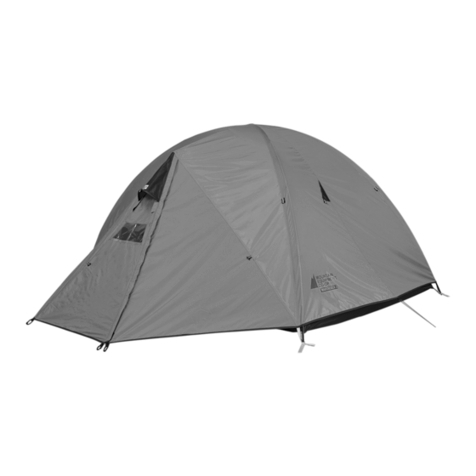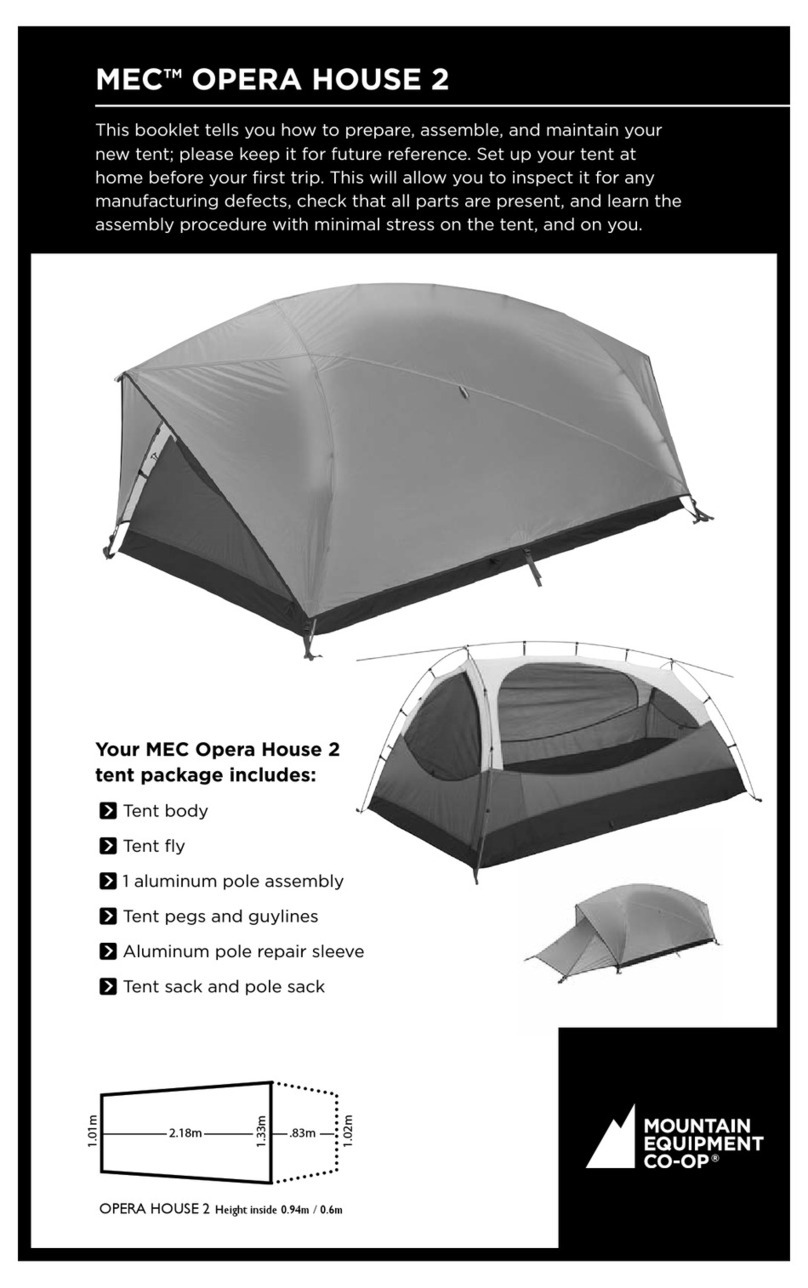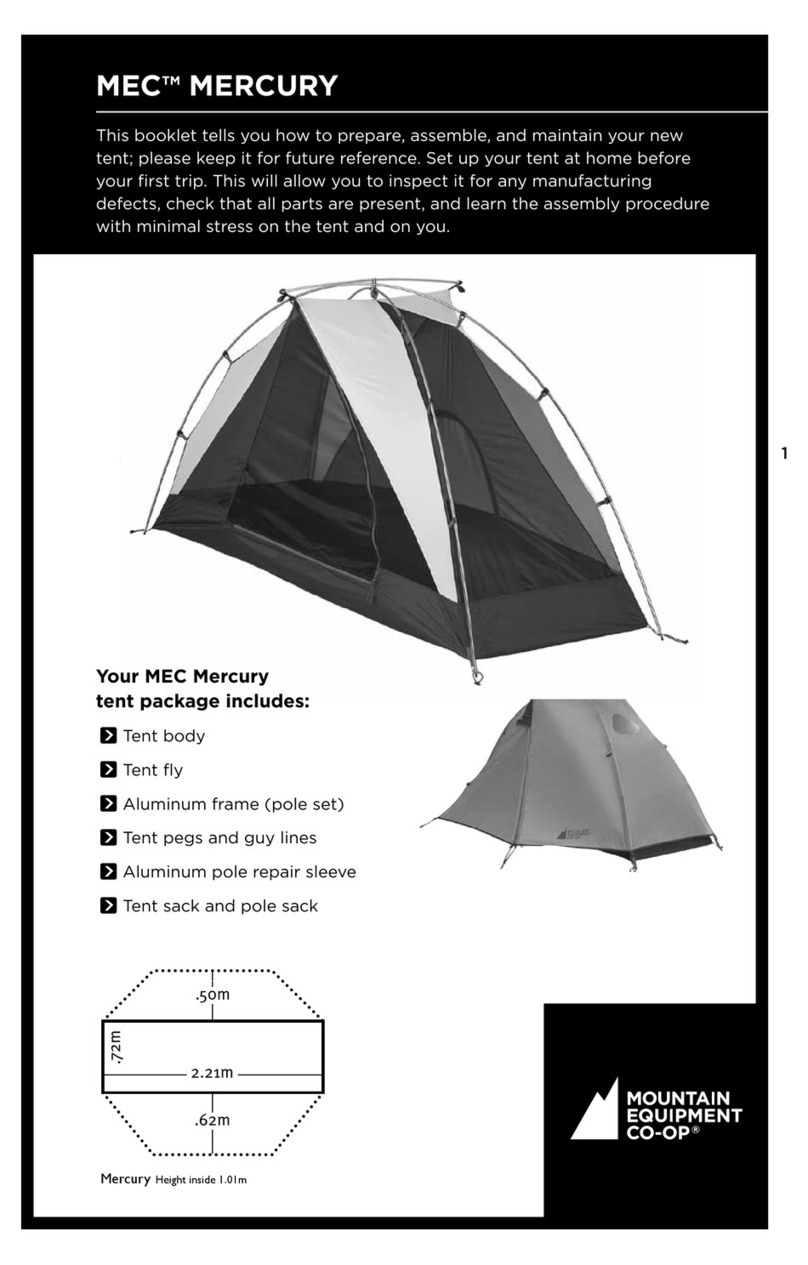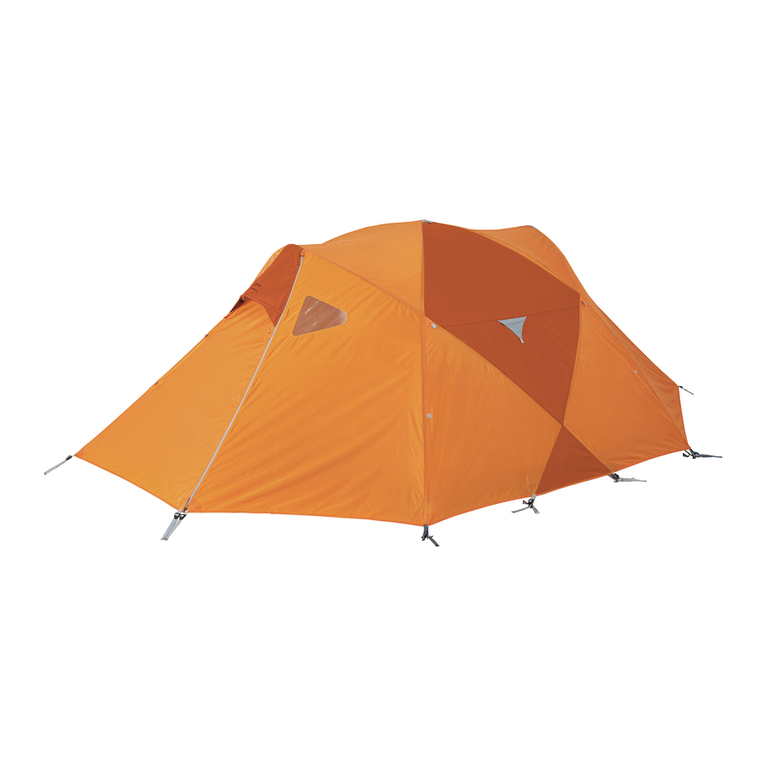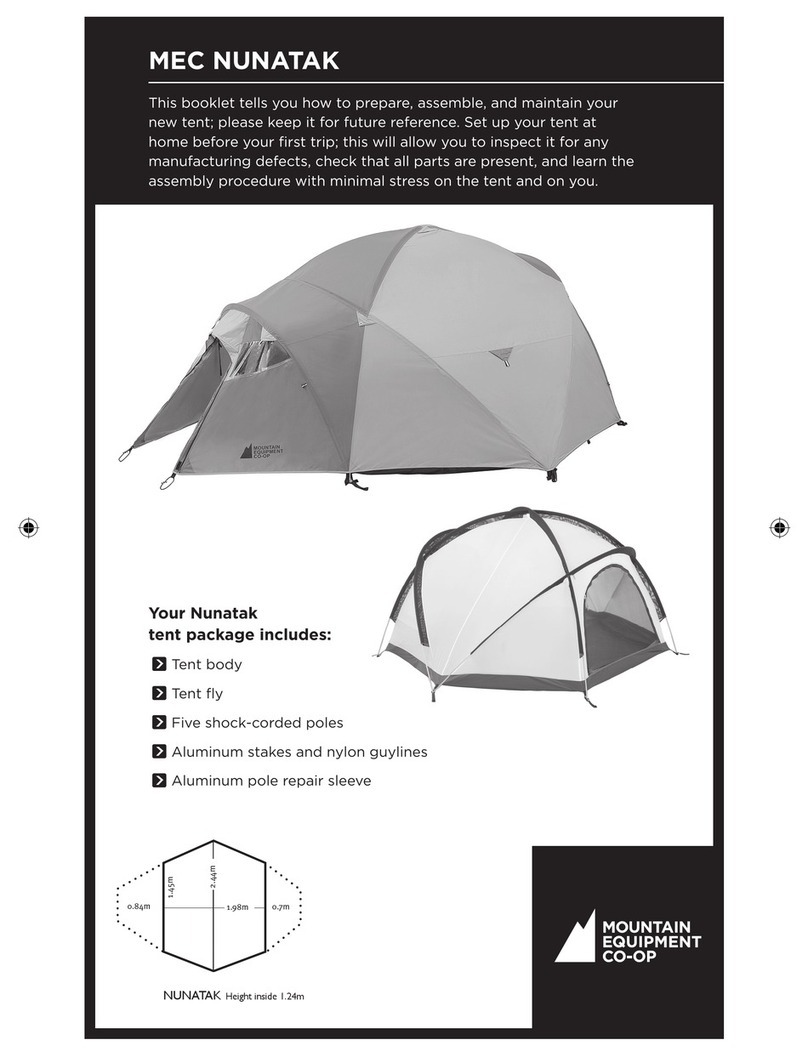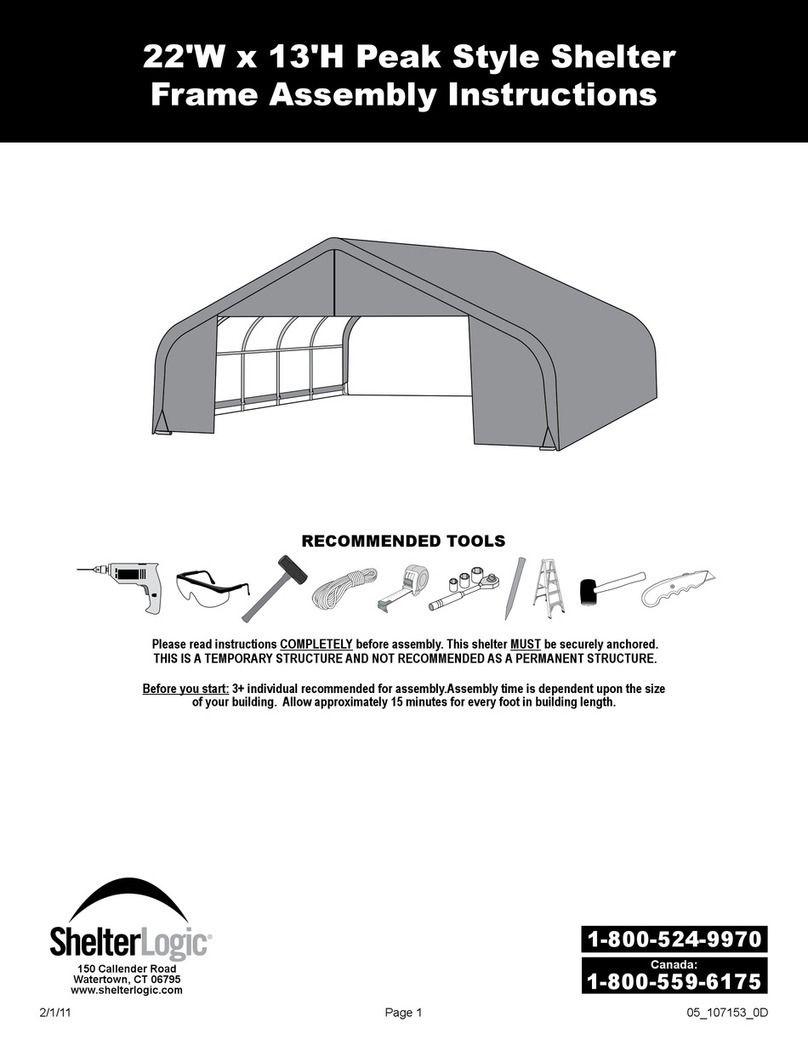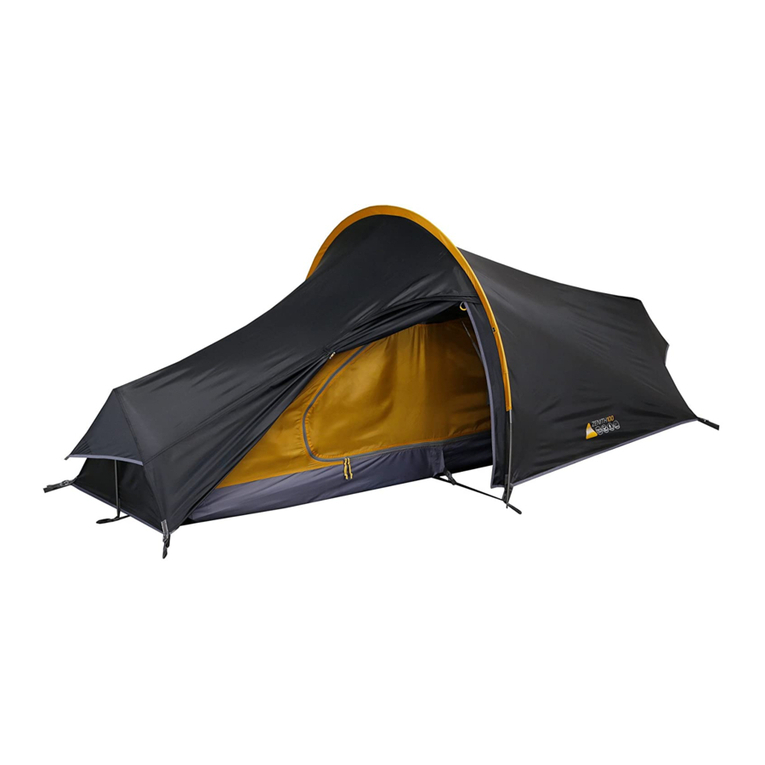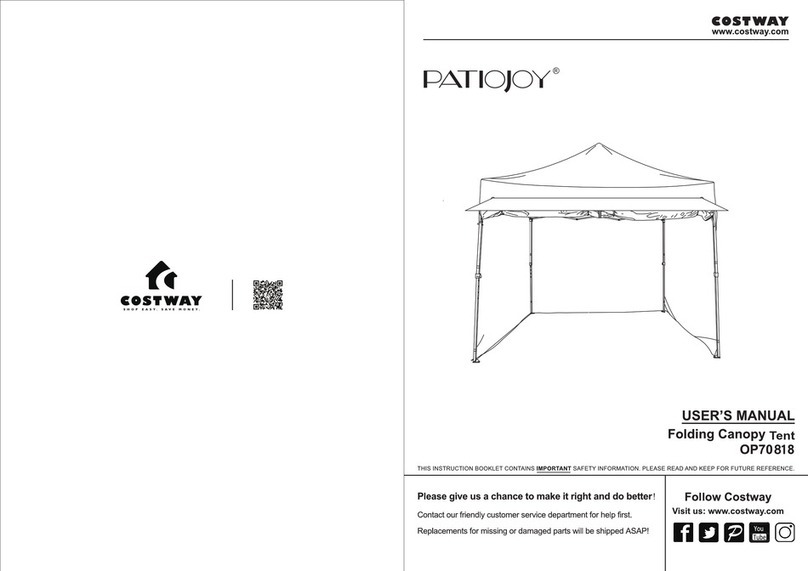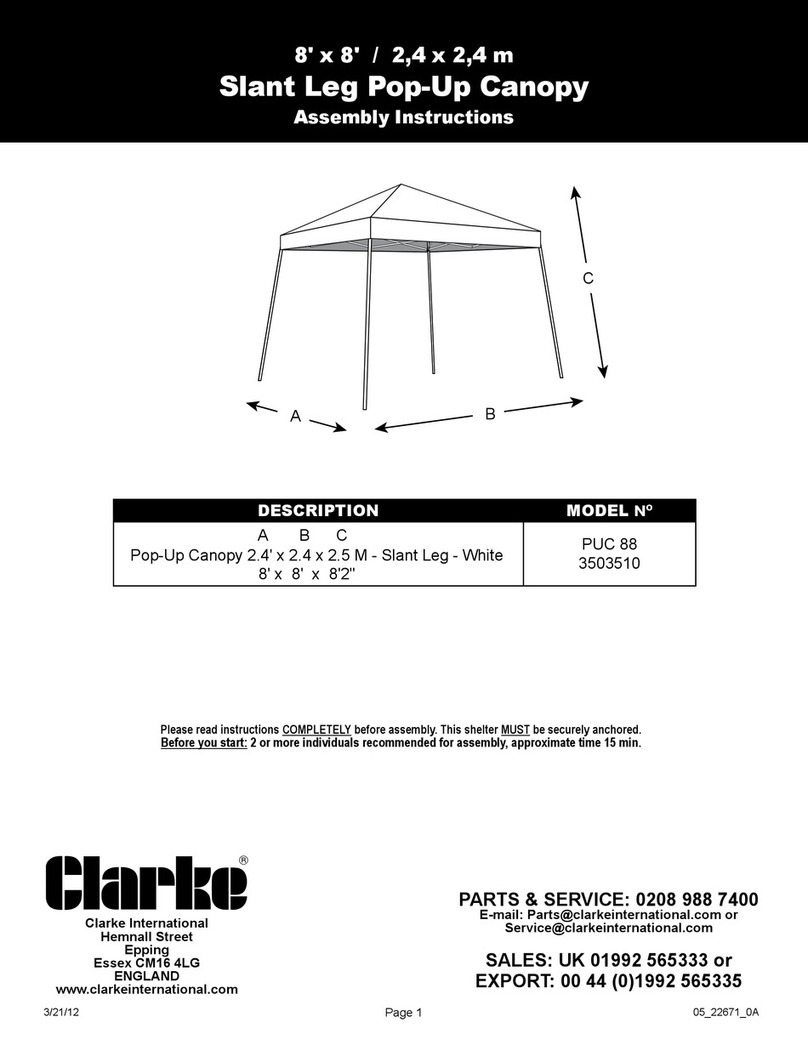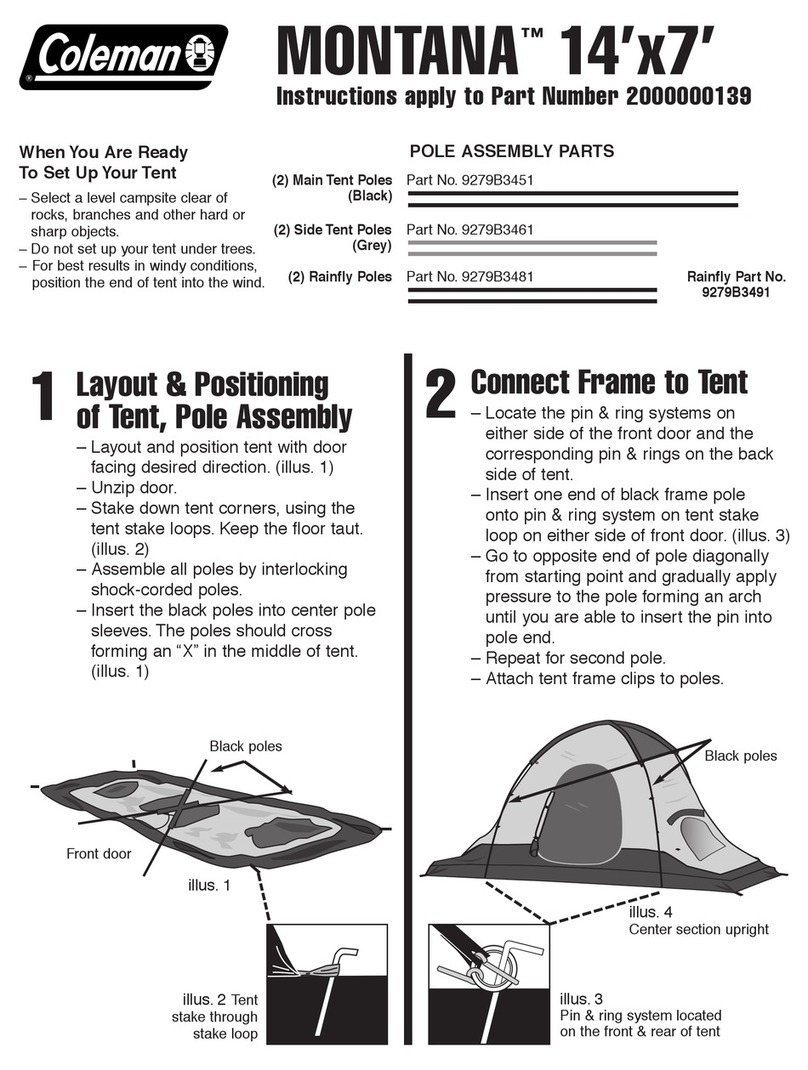If you have not already done so, peg out the six corners of the tent.
Peg out the two vestibules. Tie back the vestibules in whatever
combination provides the desired balance of ventilation and weather
protection. Note that each door has peg loops on either side of the door
zippers where they reach the ground. By pegging out one loop or the
other, you can make each door side-opening or centre-opening to adapt
it to the prevailing wind or local landscape features.
The centre panel of the front vestibule can also be rigged as a porch roof,
using corner poles improvised from trees, deadwood, paddles, or hiking
staffs. The most important thing to bear in mind if rigging this panel as a
rain roof is not to leave at or baggy surfaces where water can pool. You
can rig the panel so that it slopes away from the tent, like a cap brim, or
so that it slopes towards the tent, allowing water to drain to the sides.
You can rig the panel with one front corner higher than the other so that
water drains down the slope to the lower side. If an overhead branch
is handy, you can run a line to it from the guyline tab at the centre of
the front panel to create a water-shedding peak. Mix and match these
different ideas to adapt the panel to the local landscape and weather.
If desired, peg out the guyline loop at the bottom middle hem of each
side wall. These can be pegged so that the wall angles out from the tent
toward the peg. This makes the tent more wind resistant and also allows
maximum ventilating airow.
Each wing of the tent has a triangular window ap. Weather permitting,
you ventilate the tent by rigging a guyline from the loop at the bottom of
the window ap and pegging it out so that the window is open.
To lower each window ap, fasten the hook-and-loop patches to hold it
into place, clip the guyline loop into the plastic snap tting on the tent y,
and re-adjust the guyline tension. Note that the plastic snap tting should
be run through, not over, the guyline loop. This will prevent the window
ap from being jammed into the plastic snap tting as the guyline comes
under tension from wind.
We recommend facing the back door of the tent into any prevailing
winds. This will present the most streamlined shape to the wind, and also
positions the front door where it is downwind and sheltered for entering
and exiting the tent.
